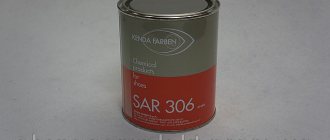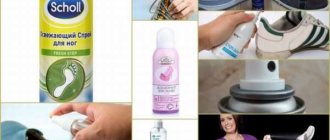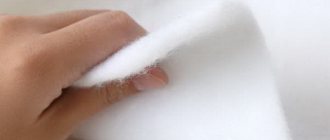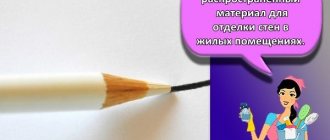With the onset of spring thaw, our shoes are exposed to greater moisture and, as a result, often require repair. Special shoe adhesives, which have replaced threads and nails, help make simple repairs at home without the help of a shoemaker.
Advantages of using special adhesives:
- The elasticity of the seam, due to which it does not crack or break, allowing the treated surface to bend freely.
- Strength and durability of seams.
- The quality of gluing depends little on the thickness of the part.
- Parts are not damaged during operation.
Types of shoe adhesives
By purpose
- Basic bonding (for example, gluing heels, soles). Provide high strength of connection between shoe elements.
- Auxiliary fastening, facilitating work using threads, nails, staples.
- Secondary fastening (adhesive lining, labels, etc.), which does not require special strength.
By type of adhesive
- Polychloroprene (nairite). It is used in the manufacture of shoes and in shoe repair shops. Designed for gluing rubber soles and felt insoles. Suitable for shoes with leather and textile uppers; it cannot glue polyurethane parts. Its main advantage is that long-term fixation of the surfaces it connects is not required. Also, this glue is frost-, water-resistant and durable. When purchasing this composition, you need to make sure that it contains chloroprene rubber resin.
- Polyurethane. Its advantage is high strength. Allows you to glue a rubber or polyurethane sole to an upper made of any material. Bonds porous surfaces well. This composition is considered the most reliable; it connects the parts very firmly. It is quite difficult to clean, so special care is required when working with it.
- Rubber perchlorovinyl (based on artificial rubber). Such compositions are used for auxiliary operations (for example, gluing tape or gluing layers of insoles) and sealing. It is not resistant to low temperatures and moisture, so it is more suitable for minor repairs of summer shoes.
- Polyvinyl chloride. Elastic due to the polyvinyl chloride resin in its composition, the adhesive copes well with connecting textile and leather elements and gluing tape. Suitable for sealing the toe of shoes.
- Universal. Available in small packages, suitable for minor repairs and gluing surfaces made of any materials. Effective, easy to use.
- Combined (from resins, rubber, nairite). Using this type of glue, you can connect the sole to the upper made of leather or synthetic material, and seal shoe seams.
Primary requirements
A good shoe glue has the following qualities:
- no fragility;
- elasticity;
- high wear resistance;
- interaction with different surfaces without harm to them.
It is desirable that the glue, after drying, can withstand heavy loads and not deteriorate due to moisture or low temperatures.
How to work with shoe glue correctly
- An important step is surface preparation. It is cleaned of dirt and residues of the previous glue and degreased with acetone, cologne or alcohol, then wiped with a dry cloth and wait until it dries completely.
- The glue is applied in a thin layer of 2-3 mm; it must be left to dry for a few minutes.
- When the glue is sufficiently absorbed and becomes almost invisible, the surfaces are combined, pressed against each other and placed under a press. You can secure the glued areas using a vice or clothespins. Excess glue must be removed.
- For complete drying it will take from 3 hours to a day, depending on the type of glue.
- If the sole is honeycombed, gluing it to the upper is more difficult due to the smaller grip surface. In this case, the bonded area must be increased using various fillers (for example, micropore trimmings). Then the surface is filled with sealant, preferably transparent. After it has dried, the sole is degreased again and glued in the standard way.
- Repair work should be carried out in a well-ventilated area.
- It should be remembered that shoe glue is a highly flammable substance, therefore, when working with it, one must not forget about fire safety rules.
- Adhesives are toxic substances to humans, so if the product accidentally gets on the mucous membranes, you should immediately wash it off under running water.
Gluing the sole at home
To repair shoes whose soles have come off, you need to purchase glue with the maximum degree of adhesion. Instructions for carrying out work:
- Clean the shoe and dry it. The shoes must be completely dry before applying the glue.
- The sole that has come off in several places should be completely torn off and then re-glued.
- Using a sharp metal spatula, clean the sole of the old glue, then go over it with sandpaper. Wipe the base thoroughly with acetone to degrease.
- Lubricate the sole with glue and repeat the same with the surface of the shoe. The layer must be made thin - up to 3 mm. Step back 3 mm from the edges so that the glue does not come out and stain the product.
- Wait a couple of minutes for the composition to reach the desired thickness, then apply the sole. Press it carefully, eliminating the presence of voids.
- Fix the boot with the sole pressed for 12-24 hours (depending on the instructions). It is better to put a weight on top and stuff the inside of the shoe with newspaper to maintain its shape.
If the glue involves the use of a hot gluing method, then the composition must be applied in the same way, and after 30 minutes the gluing area should be heated with a hair dryer. Then press the sole tightly again and secure it in this position. When using any glue, you should wear shoes outside no sooner than after 2 days.
If the sole of the shoe is made of polyurethane, the instructions change. It is necessary to cut out a piece of cotton fabric of the required size in advance, insert it between the hard sole and the base, gluing it on both sides. When the sole is “honeycomb” (has voids inside), they will have to be filled with scraps of porous rubber, bending the insole. After the void is filled with sealant. The insole most often has to be replaced with a new one.
How to tape the soles of sneakers
Troubles often arise with sports shoes, because they are subjected to serious loads and are used intensively. Most often, the sole deteriorates or the toe area tears.
How to seal a hole
If you step on a sharp or too hard object in your sneaker, a hole may appear. It is sealed like this:
- Clean the edges of the hole from dirt, degrease with alcohol and acetone;
- if the hole is too big, put a piece of fiberglass mesh inside;
- fill the hole with polyurethane glue or sealant, you can also use epoxy glue;
- cover the hole with paper tape, leveling the surface of the adhesive “patch”;
- wait until the composition dries completely.
How to choose shoe glue
Main selection criteria:
- Determine the purpose of the purchase: will it be a major or minor shoe repair, what materials (leather, suede, textiles, rubber) will be glued together. If the amount of work is quite large and serious, and you want to maximize the service life of this pair of shoes, you should give preference to popular brands from well-known manufacturers that are trusted by consumers. When shoes only need to last through the season, you can buy a simpler and cheaper composition.
- Before purchasing, read the instructions and find out for what work and materials this product is intended. The packaging must indicate that this glue is produced for shoe repair. PVA glue (dissolves in water), construction adhesives, universal “for everything” products (they leave a too hard seam that will come apart when walking) will not cope with the problem, and may even aggravate it and ruin the surface of the shoe.
- It is important that the glue has such qualities as resistance to moisture and frost.
- For homework, it is more profitable to purchase a small tube: if you do not use the glue for a long time, it will begin to dry.
- The products presented in stores vary in price and quality. The best choice is a purchase that won’t put a big dent in your household budget and will help you reliably seal your leaky shoes. The cost of glue depends on its brand and packaging (minimum - 3 g). For a large volume of work, it is worth purchasing 30-75 ml.
- The effectiveness and functionality of the selected adhesive is indicated by the following indicators:
- The resulting seams are elastic;
- Strength and durability: repair allows you to wear shoes for several more seasons;
- The parts to be glued should not be deformed and should not be connected, regardless of their thickness.
Properties
The requirements for shoe glue are very strict. If you need to glue a decorative element (bow, buckle, etc.) or attach insoles, you can use regular shoe glue. If the sole falls off or a crack appears on it, then enhanced professional compounds are needed.
They must have the following properties:
- grip reliability;
- water resistance;
- resistance to low and high temperatures;
- elasticity of the formed seam.
In addition, the glue should not destroy the material from which the shoes are made. Most adhesives are universal, however, there are varieties that cannot be used for polymer soles.
In addition, you need to take into account how long you plan to wear the shoes after repair. If you need to repair your shoes so you can wear them for a few days until you buy a new pair, you can buy an inexpensive product. To perform quality repairs, professional tools are required.
Rating of high-quality shoe adhesives
Contact
The adhesives of this brand were developed domestically and are produced in China. The product is suitable for gluing not only leather and rubber, but also porcelain, ceramics and other materials. It is effective, filling all cracks, and glues very firmly.
Adhesive Contact
Advantages:
- Budget;
- Water resistant.
Flaws:
- May not withstand low temperatures.
Average price: 37 rub.
Desmokol
The adhesive, which contains polyurethane resins, modifying substances and an organic solvent, is widely used in the footwear industry. Its advantages are transparent seams, moisture resistance, frost resistance, and reliability. Increasing in volume, it firmly connects porous surfaces. Bonds a polyurethane or rubber sole to a leather or textile upper. Since the glue is professional, it is sold in large tubes, which is not very convenient for the home craftsman. It is more difficult to find it in a small tube; if necessary, you can use analogues “Uran” or “SUREL-3”, produced in small volumes.
Desmokol
Advantages:
- Can be used as a sealant;
- Also suitable for repairing rubber boats and fishing equipment;
- Inexpensive.
Flaws:
- It is difficult to remove excess glue.
Average price: 50 rub.
Shoe droplet moment
The composition is suitable for repairing shoes made of leather and faux leather, rubber, plastic, cork, fabric in their various combinations. Provides high seam elasticity. Resistant to moisture penetration, high and low temperatures.
Shoe droplet moment
Advantages:
- Glues well;
- Inexpensive.
Flaws:
- Unpleasant odor;
- Opaque.
Average price: 30 rub.
Super Moment for Shoes
Designed for quick repair of shoes made of any materials. Transparent glue is waterproof, heat-resistant (withstands differences from -40 to 70 degrees). Leaves an elastic seam. Can also be used to work with wood, paper, cardboard, metal, plastic, ceramics.
Super Moment for Shoes
Advantages:
- Seam strength;
- Convenient dispenser;
- Dries quickly.
Flaws:
- Strong smell.
Average price: 130 rub.
Second
Polyurethane adhesive works with all types of materials used to make shoes, in different combinations. Resistant to moisture, salt, acids. Universal composition: can glue parts made of metal, glass, wood and other materials.
Glue Second
Advantages:
- Convenient elongated spout;
- Transparent;
- Inexpensive.
Flaws:
- Dries quickly in the tube.
Average price: 50 rub.
Eva
This adhesive, made in Taiwan, has earned consumer recognition for its characteristics: it reliably connects places of any cuts and tears, is waterproof, and does not flow at high temperatures. Almost invisible on the treated surface.
eva shoe glue
Advantages:
- Inexpensive;
- Hypoallergenic composition;
- Economically used;
- Long-term action.
Flaws:
- Not suitable for PVC parts;
- Difficult to find on sale.
Average price: 100 rub.
Moment Marathon
A distinctive feature of the product is rapid gluing. The glue is simple and easy to use; it has a gel consistency and does not flow. Using a thin spout, the required amount of substance is applied to the surface to be glued. Not suitable for joining parts made of polypropylene, polyethylene, PVC. “Works” with leather and its substitutes, rubber, fabric, felt, cork, wood and many other shoe materials. After freezing, the composition easily restores its properties at room temperature.
Moment Marathon
Advantages:
- Economical consumption;
- Available in different volumes: 30 and 125 ml.
- Efficiency;
- Allows you to repair both shoes and other leather products.
Flaws:
- Not a very pleasant smell.
Average price: 150 rub.
Nairit 1 (88-P1)
Designed for processing a wide variety of materials: leather, rubber, wood, fabric and others. Creates a waterproof elastic seam with a high degree of strength. When working with the product, two gluing methods are used. With the hot method, the repaired product can be used after 4 hours, with the cold method – after 24 hours. Can be diluted with excessive viscosity with gasoline or acetone.
Nairit 1 (88-P1)
Advantages:
- Efficient and reliable;
- Wide range of applications;
- There are no solvents like toluene in the composition.
Flaws:
- Not cheap.
Average price: 300 rub.
UHU "Schuh&Leder"
This product is suitable for joining hard and soft materials. The seam retains its elasticity for a long time. Resistant to moisture, alcohol, non-concentrated acids and alkalis. Does not dry out over time.
UHU "Schuh&Leder"
Advantages:
- Efficiency;
- Withstands temperature changes from 125 to -20 degrees;
- Excess residues are easily removed.
Flaws:
- Not cheap.
Average price: 264 rub.
Your own shoemaker
Most people in this situation try to repair shoes or boots on their own. Sometimes this is successful, but sometimes it leads to disastrous results, and the shoes still have to be taken to the shoemaker to eliminate the consequences of inept repairs. So what to do?
Don’t get upset and don’t rush to throw away your favorite shoes that are “begging for porridge.” Many troubles can be eliminated at home. You just need to get down to business correctly and stock up on suitable materials.
The lion's share of all repairs involves sealing a leaky pair of shoes. And here, a thoughtless purchase of the wrong type of glue can ruin all your efforts. Remember: you need to choose reliable and high-quality glue for shoe repair! And our article, we hope, will help you make an informed choice.
Polyvinyl chloride composition
So, what is the best shoe glue? Of course, one that can withstand the effects of adverse factors. Not every glue is capable of this. For example, polyvinyl chloride. It contains a resin that gives elasticity. Therefore, PVC glue is often used for joining leather parts and textile layers of products, as well as for gluing tape.
It is worth noting that such a composition is capable of well sealing the toe part of any shoe, protecting it completely from leaks.











